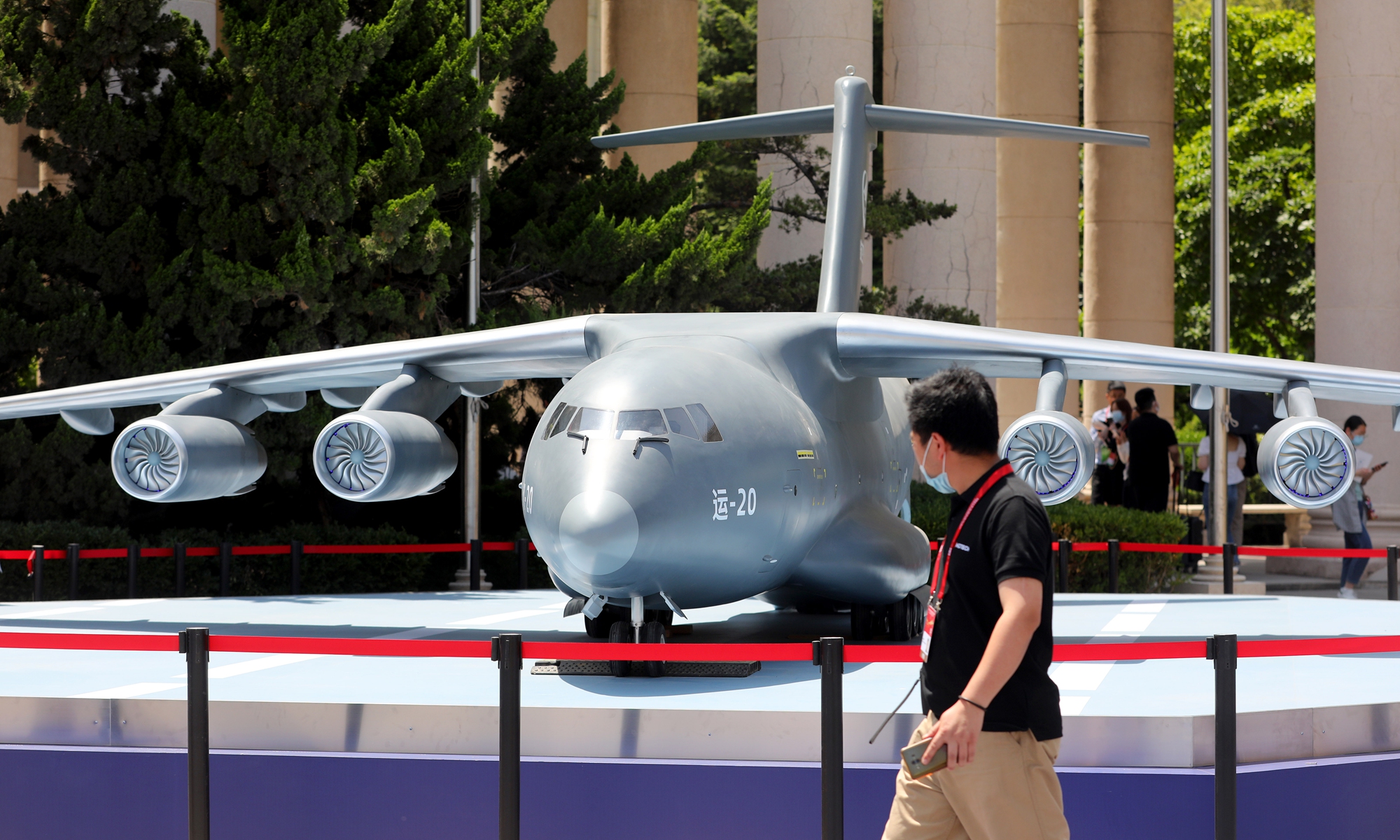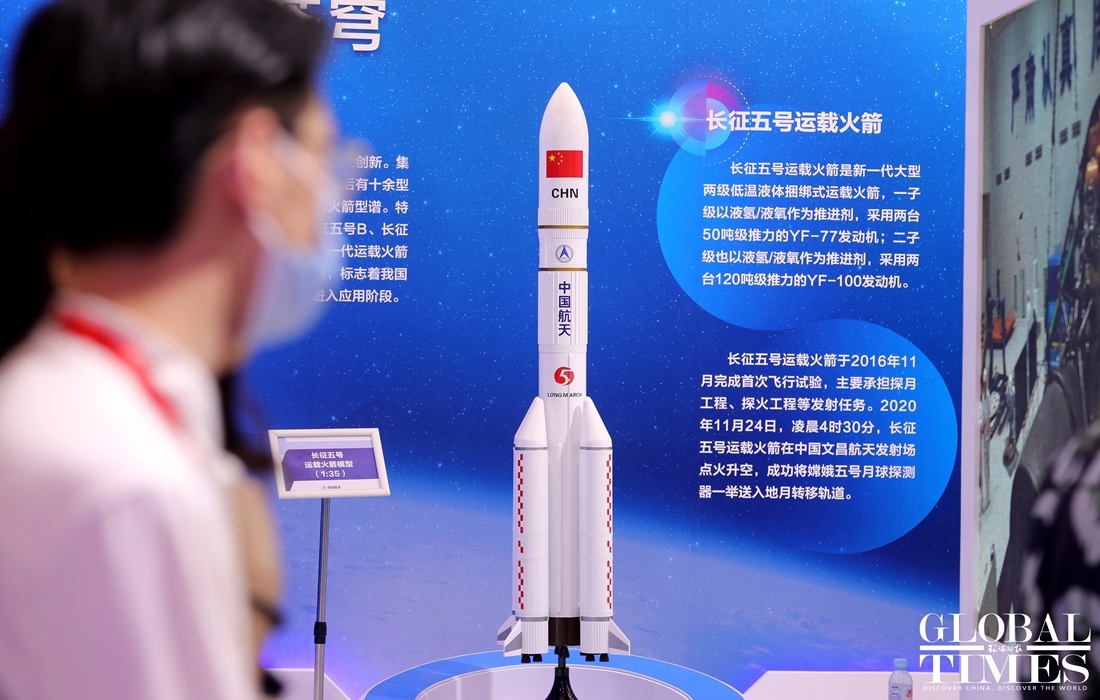Along with an overbearing clampdown on neck-choke technologies that has Chinese tech giants such as Huawei besieged by various blockages comes enthusiasm over indigenous breakthroughs in areas ranging from chipsets to domestic brand strength.
Adding fuel to the flames of patriotism, global clothing retailers including Nike and H&M have been facing a backlash in China over unfounded boycotts of cotton sourced from Xinjiang while Li Ning, Anta, among other local brands now have pride of place in the preference rankings from consumers.
Boisterous crowds filling the Shanghai Exhibition Center where China Brand Day 2021 was held Monday through to Wednesday showcasing multifaceted Made in China products including tea leaves, cosmetic items, clothes, cars and aircraft is arguably an epitome of the rising wave of homegrown brands amid a continuation of West's suppression of Chinese companies.
Chinese consumers' unprecedented affection toward local brands has given a boost to many indigenous brand names while the country's pursuit of high-tech independence is motivating local industry heavyweights to ramp up their push for breakthroughs in core technologies, per the Global Times' interviews with businesses attending the annual brand show.

A model of the Y-20 military transport aircraft is displayed at the 2021 China Brand Day, which kicked off in Shanghai on Monday. A large number of Chinese-made equipment were on display, such as Hualong-1 nuclear reactors, Chang’e-5 spacecraft, and China’s first hydrogen engine, demonstrating the power of Chinese brands to the world. Photo: Yang Hui/GT
'Created in China' kaleidoscopeThe annual gathering, introduced in 2018 as part of a drive to transform the country from the world's factory into a global hub of indigenous brands, attracted numerous visitors on the first day despite the warmer-than-usual temperature in Shanghai.
Bathing in the enthusiasm over domestic brands with local cultural elements, large crowds were standing in front of the central stage of the exhibition hall, enjoying and videoing various kinds of performances such as dancing and tea art.
As a selenium-rich local specialty, Enshi Yulu Tea has gained wide popularity with Chinese consumers as the nationwide effort to shore up the recovery of epidemic-hit Hubei succeeded in catapulting the local tea brand to national prominence, Wu Yongbing, manager of a tea company from Enshi, Central China's Hubei Province, told the Global Times on Monday on the sidelines of the event.
The sales in Wu's company rose by about 20 percent last year compared with pre-virus levels, primarily driven by purchases made by young shoppers as gifts to their elders, according to Wu.
In a sign of the rise of native Chinese fashion trends, sales of the domestic cosmetic brand Florasis reached 3 billion yuan ($467.89 million) in 2020, roughly three times that of 2019. During the "Double 11" shopping spree in 2020, consumers from over 100 countries and regions have purchased its cosmetics products.
In March, the brand officially launched its plan to enter the overseas market and soared to the top three on the lipstick sales list of Amazon Japan on its first day.
"China used to be the world's factory and the original equipment manufacturer for foreign brands but today it may be the largest "brand incubator" in the world. The internationalization of Chinese brands is an inevitable trend as the country's comprehensive strength grows stronger," a spokesperson from Florasis told the Global Times.
Local clothing brands are also in focus at the event, as sportswear makers, notably Li Ning, have been apparently preferred by domestic consumers over their foreign counterparts such as Nike and Adidas whose images have taken a dive for their Xinjiang cotton bans.
Between April 27 and May 3, sales of Li Ning items under its China Li Ning brand soared 419 percent year-on-year on Tmall, followed by a 46.3 percent rise in sales of Anta products and a 29.3 percent in Xtep's case, media reports said.
The fervor also turns out to be a boost for cotton picker manufacturers which remain unfazed by the sanctions over Xinjiang.
"Our domestic orders have been rising," Li Zhantao, general manager of Xinjiang Swan Modern Agricultural Mechanized Equipment Co, told the Global Times on Monday.
Several of the company's cotton picker models were on display at the brand event in Shanghai, including one that Li claimed to be the world's most advanced in that it combines picking, packaging and transport functionalities but sells for less than two thirds of its US lookalikes.
China has made accelerated progress in technology and culture over the past decade, resulting in an overall uplift in the Chinese people's national self-esteem and accordingly a surge of over five times in China's chic-related search volumes, according to findings jointly announced Monday by Baidu and the research institute of People.cn, the website owned by Chinese flagship newspaper the People's Daily.
Over the past five years, the amount of attention Chinese brands have received has entirely turned the tables on their overseas counterparts. The search volume of domestic brands has tripled that of foreign products so far this year, highlighting the rising prominence of local cosmetic, phone and car brands, the findings showed.
Shanghai-based automaker SAIC Motor brought its new Service-Oriented Architecture (SOA) software platform to the Shanghai event. It is "an open platform" which allows end users, car manufacturers and developers to develop together, a working staffer from SAIC Motor who prefers to remain anonymous told the Global Times on Monday.
In fact, other international auto brands such as General Motors and Volkswagen have all developed software applications on cars in China, which has made competition fierce. Tesla's brake blunder that has the US electric carmaker, one of the most popular EV brands in China, descending into hot water also gives a glimpse of sufficient room for improvement in truly appealing to Chinese consumers.
As for industrial standards in the field, the anonymous staff said there are no specific standards so far, which made it a good chance for Chinese companies to develop their own tech without restrictions.
A stall showcasing the SF5, an electric sport utility vehicle jointly launched by Huawei and Chinese automaker SERES in April, was also among the event's top attractions on Monday.
The estimated date of the vehicle's pickup is preliminarily set for July, a stall staffer told the Global Times.
Bracing for more breakthroughs The prosperity of indigenous brands, as evidenced by the event, is considered a prelude to more efforts in the pipeline to build the Chinese economic juggernaut into a genuine global epicenter of native brand names, observers said.
The push for the clout and competitiveness of Chinese brands is an important effort to improve supplies, stimulate demand and drive quality development, the National Development and Reform Commission, the country's top economic planner said in a statement on Monday, citing remarks by Premier Li Keqiang.
Local businesses should be guided toward improving the quality of their products and services while taking part in global fair competition as the country expands opening-up, making more Chinese brands a trustworthy choice in both domestic and overseas markets, the premier stated.
From weak to strong, the Chinese aviation industry has gone through 70 years of hard work. It's the first time that the Aviation Industry Corp of China (AVIC) has attended this event.
AVIC brought the models of China's domestically developed AG600 amphibious aircraft and the large transport aircraft the Y-20 to the brand exhibition, as a way to display the country's efforts in developing the national aviation industry, said Zhou Guoqiang, a spokesperson from AVIC on Monday.
Over 2,000 enterprises participated in the research, development and manufacturing of the Y-20, a "good example" to show China's independence in high-tech and the supply chain, Zhou said, noting that the aircraft was also used in combating the COVID-19 pandemic both at home and abroad as a way to show "the country's leadership" as "a responsible power."
Without independent innovation, it's impossible for the Chinese aviation industry to develop, Zhou said. Especially for military industries such as aerospace, ships and weapons, "Without high-tech innovation, it's impossible for us to have a good future," Zhou noted.
Wang Wei, director of the branding and market research center of China Railway Hi-Tech Industry Co, also echoed the view that Chinese firms have to master core technologies and provide quality services. Wang told the Global Times on Monday that it's also important to build a good brand image and enhance branding confidence toward overseas markets.





